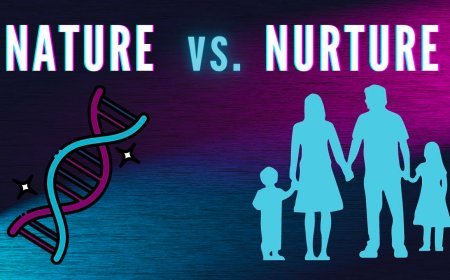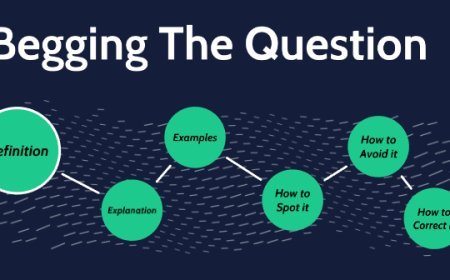Slippery Slope Fallacy: The Unwarranted Leap to Disaster
The Slippery Slope fallacy is a common logical error that asserts that a relatively small, often seemingly innocuous, initial action or proposal will inevitably lead to a chain of increasingly significant, and usually negative or disastrous, consequences.

This fallacy lies in the unjustified assumption of this inevitable progression. The arguer claims that once the first step is taken, a cascade of undesirable events must follow, without providing sufficient evidence or logical justification for each step in the supposed chain.
This fallacy is often used to instill fear or opposition to a particular idea, policy, or action, by painting a picture of its most extreme and catastrophic potential outcomes. The wordings of a slippery slope argument are designed to create a sense of inevitability and dread, implying that the initial step is merely the first push down a path to unavoidable ruin.
The Core Mechanism of the Slippery Slope
The structure of a slippery slope argument typically looks like this:
- If A happens, then B will inevitably happen.
- If B happens, then C will inevitably happen.
- ...and so on, until Z will inevitably happen.
- Z is a terrible outcome.
- Therefore, A should not happen.
The flaw is not in the idea that one event could lead to another. Often, actions do have consequences. The fallacy arises when the chain of consequences is presented as inevitable and unbroken, without adequate evidence or logical connection at each link. It fails to account for factors that might prevent or mitigate the predicted outcomes, or for conscious choices that can be made at each step to diverge from the predicted path.
The crucial wordings that signal a slippery slope fallacy often include:
- "If we allow X, then soon Y will happen, and then Z will happen."
- "This is a slippery slope to..."
- "Once we start down this path, there's no telling where it will end."
- "Next thing you know..."
- "This opens the door to..."
- "Where will it stop?"
- "Before you know it..."
These wordings create a strong sense of an uncontrollable, downward momentum, suggesting that a single initial action will unleash forces that cannot be contained.
Types and Examples of Slippery Slope Arguments
Slippery slope arguments appear in various contexts, from personal decisions to national policies:
-
Policy and Legislation: Often used to argue against new laws or regulations.
- Example 1: "If we legalize marijuana for medical use, next people will start trying heroin, then cocaine, and soon our society will be overrun by drug addicts and crime will skyrocket!"
- Analysis: This argument posits an inevitable progression from medical marijuana to widespread hard drug use and societal collapse, without evidence that such a causal chain must occur. There are many intervening factors and choices (e.g., regulations, individual choices, enforcement) that could prevent this catastrophic outcome.
- Example 2: "If the government starts regulating the internet to prevent misinformation, pretty soon they'll be controlling all our news, censoring our thoughts, and we'll lose all our freedom of speech!"
- Analysis: This suggests that even minor internet regulation will inexorably lead to total government control and the eradication of free speech, ignoring potential safeguards, judicial oversight, and public resistance that could halt such a progression.
- Example 1: "If we legalize marijuana for medical use, next people will start trying heroin, then cocaine, and soon our society will be overrun by drug addicts and crime will skyrocket!"
-
Parenting and Education: Used to justify strict rules or avoid perceived leniency.
- Example 1: "If I let my child stay up an extra 15 minutes tonight, they'll expect to stay up late every night, then they'll never go to bed on time, their grades will drop, and they'll fail out of school!"
- Analysis: A single instance of staying up late is unlikely to directly and inevitably lead to academic failure. Parents can adjust rules, and children's behavior is influenced by many factors beyond one minor indulgence.
- Example 2: "If we allow students to use their phones in class for educational purposes, they'll just spend all their time texting, then they'll start cheating, and eventually, academic standards will collapse entirely!"
- Analysis: While phone use can be a distraction, it doesn't inevitably lead to rampant cheating and the collapse of standards. Policies, monitoring, and teaching methods can mitigate potential downsides.
- Example 1: "If I let my child stay up an extra 15 minutes tonight, they'll expect to stay up late every night, then they'll never go to bed on time, their grades will drop, and they'll fail out of school!"
-
Social and Ethical Issues: Frequently found in debates about moral or cultural shifts.
- Example 1: "If we allow same-sex marriage, then what's next? People will want to marry their pets, or multiple partners, and the institution of marriage will be completely destroyed!"
- Analysis: This argument creates an absurd, non-sequitur chain. Legalizing same-sex marriage does not inherently create a legal or logical precedent for marrying animals or groups of people. Each of those proposals would require separate legal and ethical justifications.
- Example 2: "If we permit assisted suicide for the terminally ill, it's only a matter of time before it's offered to the elderly, the disabled, and eventually, anyone deemed 'unproductive' by the state. It's a path to involuntary euthanasia!"
- Analysis: This argument ignores potential safeguards (e.g., strict criteria, multiple medical assessments, patient consent, legal frameworks) designed to prevent such abuses and assumes an inevitable slide into state-sanctioned killing.
- Example 1: "If we allow same-sex marriage, then what's next? People will want to marry their pets, or multiple partners, and the institution of marriage will be completely destroyed!"
Distinguishing a Fallacy from a Valid Causal Chain
It's crucial to understand that not every prediction of consequences is a slippery slope fallacy. Sometimes, a series of events can logically and causally lead from one to another. The distinction lies in the justification for the inevitability.
A valid causal chain provides:
- Strong evidence for each link: There's a reasonable, demonstrated, or highly probable connection between each step.
- Plausibility: The progression isn't based on exaggeration or speculation.
- Consideration of mitigating factors: Acknowledgment that steps can be taken to prevent the worst outcomes, or that other factors might influence the chain.
Example of a plausible (non-fallacious) causal chain:
"If you don't study for your final exam (A), you'll likely fail the exam (B). If you fail the exam (B), your overall course grade will drop significantly (C). If your course grade drops significantly (C), you might not graduate on time (D), which could delay your job search (E)."
- Analysis: Each step here has a high probability of occurring given the preceding one, and there are direct, logical connections (e.g., not studying directly impacting exam performance). This is a strong argument about likely consequences, not an unsupported leap to disaster.
Why Slippery Slope Fallacies are Persuasive (and Dangerous)
The persuasive power of the slippery slope fallacy comes from its ability to:
- Evoke Fear: It plays on anxieties about future negative outcomes, making the initial action seem terrifying. The vivid wordings of potential doom can override rational assessment.
- Simplify Complex Issues: It reduces a nuanced debate about potential risks and benefits into a clear, albeit false, warning of impending catastrophe.
- Appeal to Intuition: For many, the idea of a "line that shouldn't be crossed" resonates intuitively, making the slippery slope seem like common sense.
- Avoid Substantive Debate: Instead of discussing the merits or immediate consequences of A, the discussion is shifted to the far-off, hypothetical, and often exaggerated consequences of Z.
The danger of the slippery slope fallacy is that it can paralyze action, even when the initial step might be beneficial or necessary. It can lead to the rejection of reasonable policies, innovations, or social reforms out of unfounded fear. By focusing on distant, unproven calamitous futures, it distracts from the immediate issue and prevents rational risk assessment and constructive solutions. It fosters a climate of alarmism rather than careful consideration.
Identifying and Countering the Slippery Slope
To identify a slippery slope fallacy, listen for the wordings that suggest inevitability without justification: "inevitably," "unavoidably," "no turning back," "where does it stop?" Check if the speaker provides evidence for each link in the chain or if they simply assert that one thing will lead to another.
To effectively counter a slippery Slope fallacy:
- Challenge the Inevitability: The most direct counter is to deny that the predicted chain of events is unavoidable.
- Example Counter: "Just because we take step A doesn't mean we must take step B, and certainly not Z. There are many points where we can pause, evaluate, or choose a different path."
- Demand Evidence for Each Link: Ask the arguer to justify each step in their supposed chain of consequences.
- Example Counter: "What evidence do you have that legalizing medical marijuana necessarily leads to widespread hard drug addiction? What mechanisms would force that progression?"
- Introduce Mitigating Factors or Safeguards: Point out policies, regulations, or societal factors that would prevent the predicted undesirable outcomes.
- Example Counter: "We can implement strict regulations and oversight to ensure that allowing assisted suicide for the terminally ill doesn't lead to abuses. It's not an inevitable slide."
- Highlight the Absurdity (if applicable): If the predicted outcome is truly outlandish, you can point out its lack of logical connection.
- Example Counter: "Allowing same-sex marriage has no logical or legal bearing on marrying pets. Those are entirely separate concepts."
- Re-focus on the Immediate Issue: Bring the conversation back to the actual proposal and its immediate, demonstrable effects, rather than hypothetical future disasters.
- Example Counter: "Let's focus on the benefits and risks of regulating this specific type of online content, rather than speculating about a hypothetical future where all speech is censored."
- Use an Analogy to Show the Flaw:
- Example Analogy: "That's like saying if you take a single step outside your door, you'll inevitably end up falling off a cliff. There are many steps in between, and you can choose to stop or change direction at any point."
By directly challenging the presumed inevitability and demanding logical proof for each step in the chain, you can dismantle the fear-mongering and expose the lack of substance behind the slippery slope argument. This allows for a more rational assessment of the actual risks and benefits of the initial action.
Want to know more about fallacies? Click here to read about Appeal to Popular Opinion
What's Your Reaction?
 Like
0
Like
0
 Dislike
0
Dislike
0
 Love
0
Love
0
 Funny
0
Funny
0
 Angry
0
Angry
0
 Sad
0
Sad
0
 Wow
0
Wow
0





















